A heme-sensing mechanism in the translational regulation of mitochondrial cytochrome c oxidase biogenesis
- PMID: 23217259
- PMCID: PMC3523284
- DOI: 10.1016/j.cmet.2012.10.018
A heme-sensing mechanism in the translational regulation of mitochondrial cytochrome c oxidase biogenesis
Abstract
Heme plays fundamental roles as cofactor and signaling molecule in multiple pathways devoted to oxygen sensing and utilization in aerobic organisms. For cellular respiration, heme serves as a prosthetic group in electron transfer proteins and redox enzymes. Here we report that in the yeast Saccharomyces cerevisiae, a heme-sensing mechanism translationally controls the biogenesis of cytochrome c oxidase (COX), the terminal mitochondrial respiratory chain enzyme. We show that Mss51, a COX1 mRNA-specific translational activator and Cox1 chaperone, which coordinates Cox1 synthesis in mitoribosomes with its assembly in COX, is a heme-binding protein. Mss51 contains two heme regulatory motifs or Cys-Pro-X domains located in its N terminus. Using a combination of in vitro and in vivo approaches, we have demonstrated that these motifs are important for heme binding and efficient performance of Mss51 functions. We conclude that heme sensing by Mss51 regulates COX biogenesis and aerobic energy production.
Copyright © 2012 Elsevier Inc. All rights reserved.
Figures
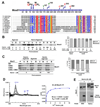
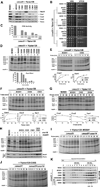
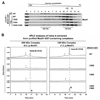
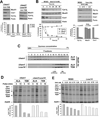
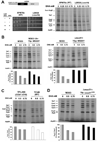
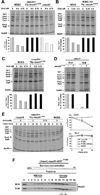
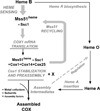
Similar articles
-
Mitochondrial Cytochrome c Oxidase Biogenesis Is Regulated by the Redox State of a Heme-Binding Translational Activator.Antioxid Redox Signal. 2016 Feb 20;24(6):281-98. doi: 10.1089/ars.2015.6429. Epub 2015 Nov 2. Antioxid Redox Signal. 2016. PMID: 26415097 Free PMC article.
-
Cox25 teams up with Mss51, Ssc1, and Cox14 to regulate mitochondrial cytochrome c oxidase subunit 1 expression and assembly in Saccharomyces cerevisiae.J Biol Chem. 2011 Jan 7;286(1):555-66. doi: 10.1074/jbc.M110.188805. Epub 2010 Nov 10. J Biol Chem. 2011. PMID: 21068384 Free PMC article.
-
The Cox1 C-terminal domain is a central regulator of cytochrome c oxidase biogenesis in yeast mitochondria.J Biol Chem. 2017 Jun 30;292(26):10912-10925. doi: 10.1074/jbc.M116.773077. Epub 2017 May 10. J Biol Chem. 2017. PMID: 28490636 Free PMC article.
-
Biogenesis of cytochrome oxidase-sophisticated assembly lines in the mitochondrial inner membrane.Gene. 2005 Jul 18;354:43-52. doi: 10.1016/j.gene.2005.03.017. Gene. 2005. PMID: 15905047 Review.
-
Modular assembly of yeast mitochondrial ATP synthase and cytochrome oxidase.Biol Chem. 2020 May 26;401(6-7):835-853. doi: 10.1515/hsz-2020-0112. Biol Chem. 2020. PMID: 32142477 Review.
Cited by
-
Mitochondrial Cytochrome c Oxidase Biogenesis Is Regulated by the Redox State of a Heme-Binding Translational Activator.Antioxid Redox Signal. 2016 Feb 20;24(6):281-98. doi: 10.1089/ars.2015.6429. Epub 2015 Nov 2. Antioxid Redox Signal. 2016. PMID: 26415097 Free PMC article.
-
The Plasma Membrane Protein Nce102 Implicated in Eisosome Formation Rescues a Heme Defect in Mitochondria.J Biol Chem. 2016 Aug 12;291(33):17417-26. doi: 10.1074/jbc.M116.727743. Epub 2016 Jun 17. J Biol Chem. 2016. PMID: 27317660 Free PMC article.
-
Mitochondrial COA7 is a heme-binding protein with disulfide reductase activity, which acts in the early stages of complex IV assembly.Proc Natl Acad Sci U S A. 2022 Mar 1;119(9):e2110357119. doi: 10.1073/pnas.2110357119. Proc Natl Acad Sci U S A. 2022. PMID: 35210360 Free PMC article.
-
Mössbauer-based molecular-level decomposition of the Saccharomyces cerevisiae ironome, and preliminary characterization of isolated nuclei.Metallomics. 2022 Nov 1;14(11):mfac080. doi: 10.1093/mtomcs/mfac080. Metallomics. 2022. PMID: 36214417 Free PMC article.
-
Mammalian Mss51 is a skeletal muscle-specific gene modulating cellular metabolism.J Neuromuscul Dis. 2015;2(4):371-385. doi: 10.3233/JND-150119. Epub 2015 Sep 21. J Neuromuscul Dis. 2015. PMID: 26634192 Free PMC article.
References
-
- Barros MH, Tzagoloff A. Regulation of the heme A biosynthetic pathway in Saccharomyces cerevisiae. FEBS Lett. 2002;516:119–123. - PubMed
Publication types
MeSH terms
Substances
Grants and funding
LinkOut - more resources
Full Text Sources
Other Literature Sources
Molecular Biology Databases

